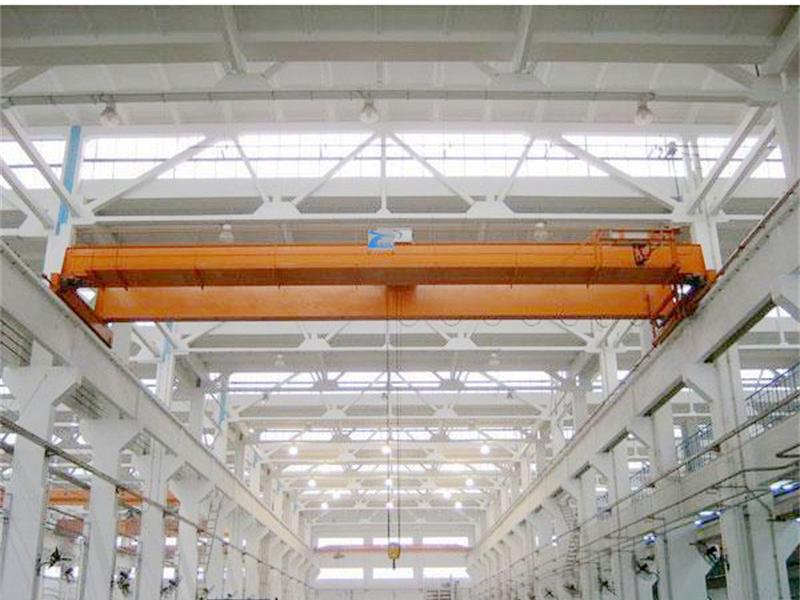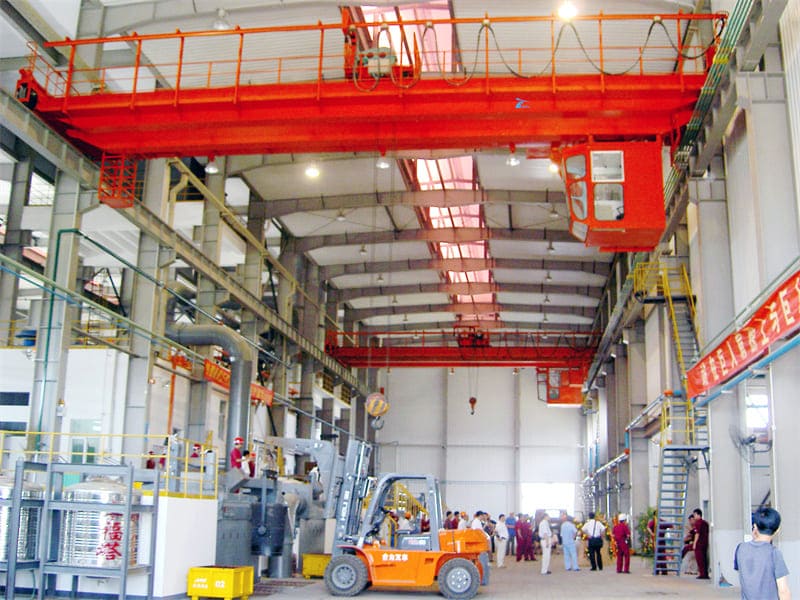The top running double girder bridge crane consists of a main beam frame, a trolley running device, and a trolley with a lifting and moving device. The main beam is paved with tracks for the trolley to move. The two main beams are equipped with a mobile platform on the outside, one side is used to assemble and repair the trolley moving device, and the other side is used to assemble the trolley operating device.
A full-view cab is suspended under the main beam, and a linkage control console or a single-machine control box is installed in the cab. A lateral ladder is installed between the cab and the mobile platform. The main beam of the top running double girder bridge crane is connected to the end beams on both sides with the middle as the connection point.
One of the main advantages of top running bridge cranes is that they can be designed to handle extreme loads. As such, they are typically larger than jib overhead cranes, so not only can they have higher rated capacities than cantilever overhead cranes, but they can also accommodate wider spans between track beams due to the larger size of the structural members that make up the system.
Mounting the 20 ton top running bridge crane trolley on top of the bridge girder also provides benefits from a maintenance perspective, allowing for easier access and repairs. If a cantilever overhead crane requires maintenance, it is likely that the crane trolley will have to be removed from the bridge girder to properly access it.
However, a top running bridge crane is located on top of the bridge girder, so maintenance workers can perform the necessary activities on site as long as there is a walkway or other means of accessing the space.
The 20 ton top running bridge crane can also provide significant benefits in areas where overhead space is limited. When designing an overhead crane system, one of the most important factors to keep in mind is the required top hook height, which is the height of the hook in its highest position.









